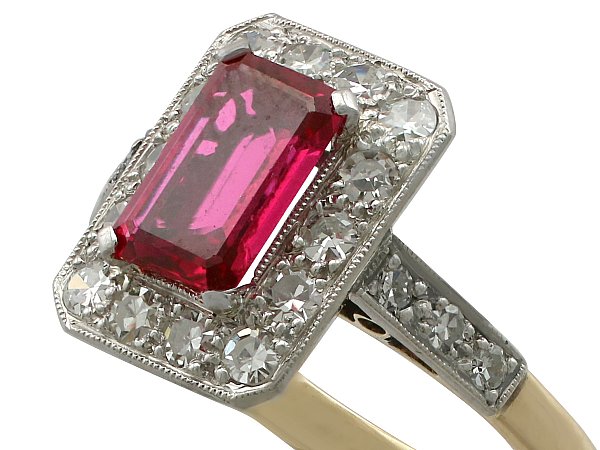Ruby Essentials

Rubies are a variety of corundum crystal, the same species as sapphires. The key difference is their red color, caused by trace amounts of chromium. This spectacular red color is why rubies have a distinct separation from sapphires in the gemstone world. There are also different types of rubies including natural rubies, treated rubies, and […]

What are Rubies? Rubies are variety of . Pure corundum has no coloration; with the vivid red ruby color comes from trace amounts of the element chromium (Cr). Like other precious stones, finding , ruby material […]

Understanding the 4Cs of ruby quality is important when choosing a ruby that truly stands out. These four key factors are color, cut, clarity, and carat weight. Together, they help define the beauty and value of the gemstone. Among them, color is the most important, with the finest rubies showing a rich and deep red. […]

Pricing a ruby gemstone involves evaluating several key factors that contribute to its beauty, rarity, and market value. The most critical element is color, with vivid, well-saturated red hues—especially the coveted “pigeon blood red”—commanding the highest prices. Clarity also plays a significant role; while inclusions are common in rubies, stones with fewer visible flaws are […]

Ruby treatments and enhancements are commonly used to improve the appearance, durability, and overall value of the gemstone. The most widespread method is heat treatment, which enhances the ruby’s color and clarity without compromising its natural integrity. Other ruby treatments and enhancements may include fracture filling or diffusion, though these are less accepted in high-end […]

Ruby rarity and enduring value have long captivated gem lovers and collectors around the world. Known for their intense red color and remarkable durability, rubies are among the rarest of all gemstones. This ruby rarity and enduring value make them highly sought after in both fine jewelry and investment markets. Whether passed down as heirlooms […]

Rubies (and the other corundum variety, sapphire) are an oxide written as Al₂O₃, formally called aluminum oxide. This chemical composition is the foundation of what makes rubies so unique. Ruby crystals & chemistry play a key role in their identity—the difference between rubies and sapphires lies in the presence of trace elements, since pure corundum […]

Ruby simulants and synthetics are often used as alternatives to natural rubies, but they differ significantly in origin and value. Synthetic rubies are lab-created stones that have the same chemical composition, structure, and properties as natural rubies. They offer an affordable option with high clarity and vivid color, making them popular in fine and fashion […]
